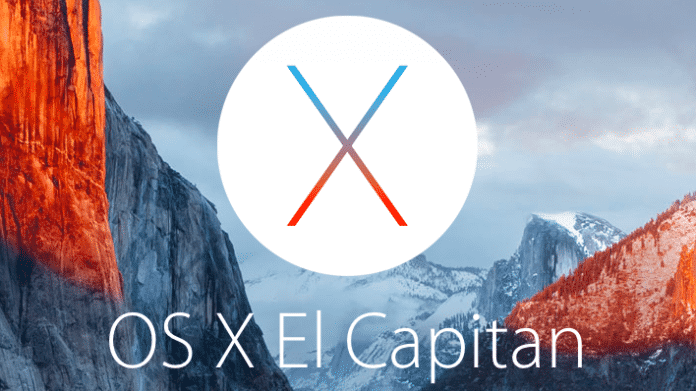Any idea whether the new Jave update (Version 8 Update 65) is a problem for Adobe CS users running El Capitan? I ran into issues when I installed the new OS but remedied them with some help from your post here and other forums. Macバージョン10.12 Sierra、10.11 El Capitanまたは10.10 Yosemiteで一部のアプリケーションを実行すると、最新バージョンのJavaをインストールした後でもJavaをインストールするように求められます。. El Capitan Finderbar For Windows Vista. Mac OS X 10.11 El Capitan also features a new and improved version of Safari, now equipped with advanced search mechanics, reworked Favorites and a built-in news feed. Other applications, like Notes, and a lot of bundled software have all been optimized and adjusted to provide the most comfortable.
Java is no longer installed with a OS X 10.11 El Capitan clean install, and you’ll find that after updating a Mac a prior version of JRE may no longer function.
You may come across when trying to use some particular applications or web content, “This application requires the legacy Java SE 6 runtime which is unavailable for this version of OS X.” error message, which means if you want to run that app you’re going to need to use an older version of Java.
If you do not need Java, you should not install Java. Java is, and always has been, the source of many security holes.
Here’s how you can install JRE (Java Runtime Environment).
Step 1. Open Safari and go to the Oracle Java downloads page and download the JRE .tar.gz version. You should end up with a file named something similar to jre-8u65-macosx-x64.tar.gz.
Step 2. Go to your Downloads folder and extract the JRE download or use Terminal to extract files:
Step 3. Open Terminal


Step 4. Edit the Info.plist file within to enable the JRE to be used from the the command line, and from bundled applications:
Step 5. Move the JRE folder to the correct location:
Type password on prompt.
Be sure you are in the correct directory (the JRE folder) when you issue this command, because it will move your current directory to /Library/Java/JavaVirtualMachines/!
Step 6. Create a link to add backwards compatibility for some applications made for older Java versions:
You should be done now, so try and open the application. If it does not work, some applications require legacy Java 6 to be installed.
You can have it installed without actually using it, however, it’s possible to trick the applications into thinking legacy Java 6 is installed, without actually doing so.
Java 6 For Mac El Capitan
Step 1.Disable SIP (System Integrity Protection) in OS X El Capitan. Here is tutorial to disable and enable SIP.
Step 2. Trick some applications into thinking that legacy Java 6 is installed by creating two folders with the following commands in Terminal:
Java Se 6 Runtime Download For Mac El Capitan
Step 3. Don’t forget to enable SIP again after creating these directories.
My previous post about installing Java on OS X received quite a bit of traffic, and I felt that some of the information was outdated, and it became a little unclear after all the edits, so I’ve endeavoured to create a much easier to understand set of instructions.
The instructions for installing the JDK (Java Development Kit) are a subset of the instructions for installing just the JRE, because Oracle provides an installer for the JDK.
Java Download For Mac El Capitan

- Go to the Oracle Java downloads page and download the JDK installer. You should end up with a file named something similar to
jdk-8u60-macosx-x64.dmg, but perhaps a newer version. - Open the
.dmgDisk Image and run the installer. - Open
Terminal - Edit the JDK’s newly installed
Info.plistfile to enable the included JRE to be used from the the command line, and from bundled applications:The third line fixes a permissions issue create by using
defaults write. The fourth line is not required, but makes the file more user-friendly if you open it again in a text editor. - Create a link to add backwards compatibility for some applications made for older Java versions:
- Optional: If you’re actually using the JDK for software development, you may want to set the
JAVA_HOMEenvironment variable. The recommended way is to use/usr/libexec/java_homeprogram, so I recommend settingJAVA_HOMEin your.bash_profilelike Jared suggests:This will get the latest installed Java’s home directory by default, but check out
man java_homefor ways to easily get other Java home directories.
Java For Mac El Capitan
You should be done now, so try and open the application. If it does not work, some applications require legacy Java 6 to be installed. You can have it installed without actually using it, however, it’s possible to trick the applications into thinking legacy Java 6 is installed, without actually doing so.
Install Java Mac El Capitan
If you’re running El Capitan, this is actually a little difficult now, because Apple added SIP (System Integrity Protection) to OS X. I have written a post explaining how to disable and enable SIP.
Update Java Mac El Capitan
If you’ve disabled SIP, or are not running El Capitan yet, you can trick some applications into thinking legacy Java 6 is installed by creating two folders with the following commands in Terminal:
Don’t forget to enable SIP again after creating these directories.
Comments are closed.